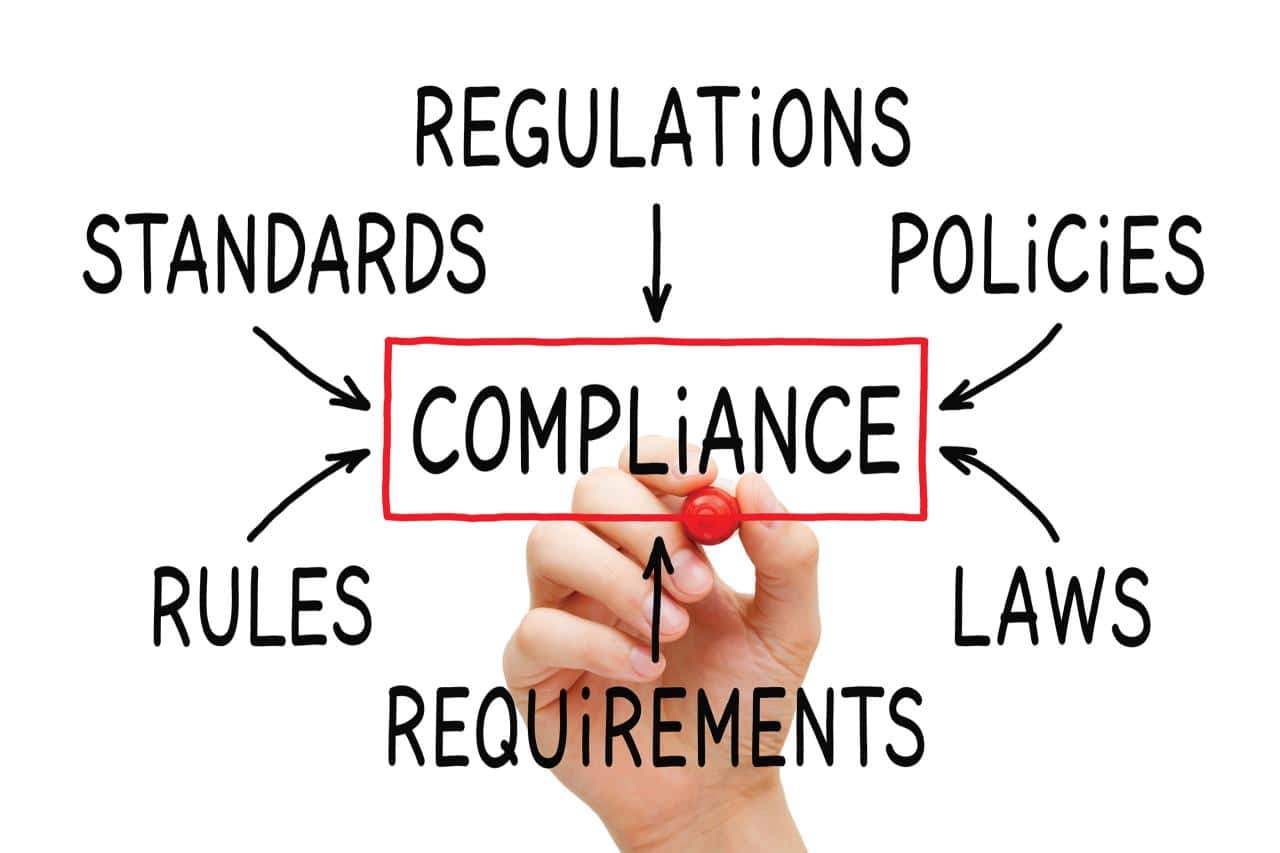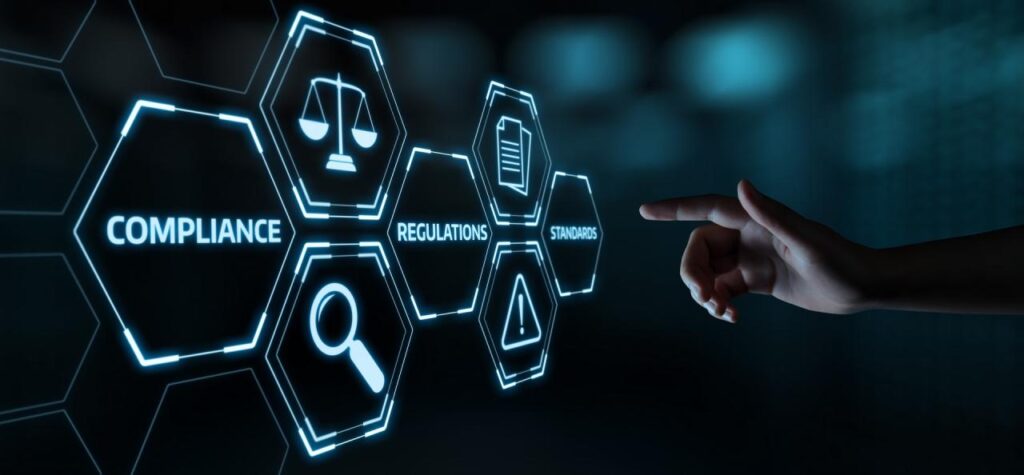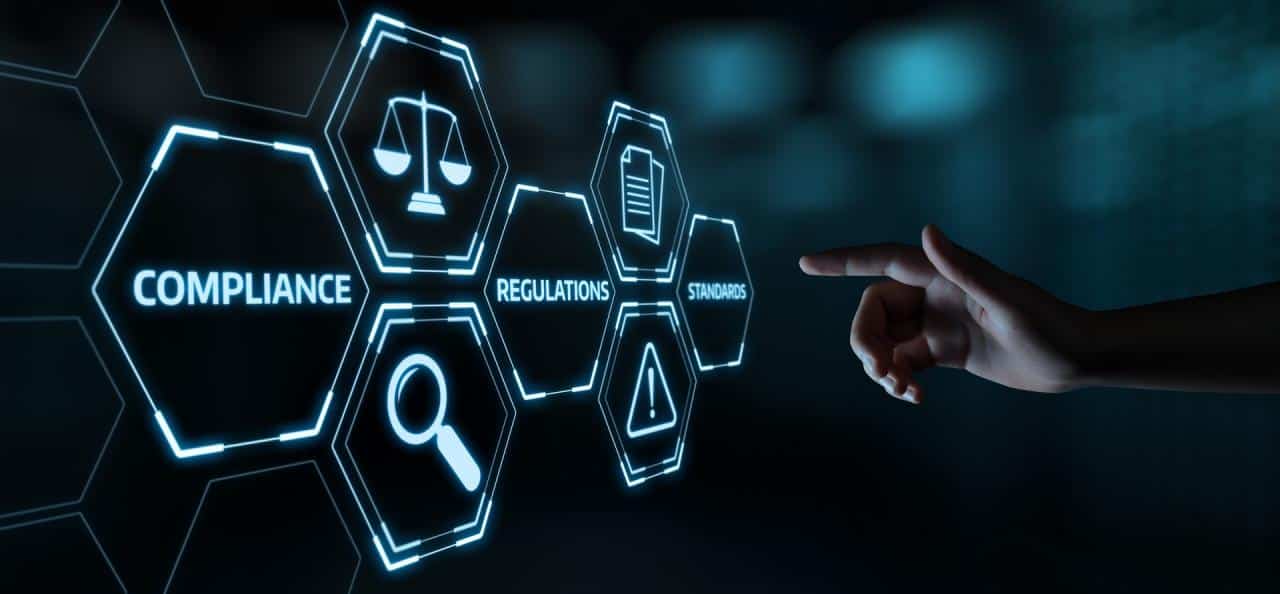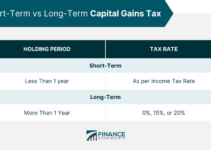Regulation and Compliance: Navigating the Changing Landscape – a journey through a world where the rules are constantly evolving. The ground beneath our feet shifts, and the familiar contours of business practices blur as new regulations emerge, demanding adaptation and agility.
Like a ship navigating treacherous waters, businesses must chart a course through a sea of compliance, constantly adjusting to the winds of change.
The landscape of regulation is a dynamic one, marked by a constant stream of new laws, policies, and guidelines. This constant evolution presents both challenges and opportunities for businesses. The challenge lies in staying abreast of the ever-changing rules, ensuring that every aspect of their operations remains compliant.
However, within this challenge lies the opportunity to cultivate a culture of compliance, transforming it from a mere obligation into a strategic advantage.
The Evolving Regulatory Landscape
The regulatory landscape is constantly changing, becoming increasingly complex and challenging for businesses to navigate. This evolution is driven by factors such as technological advancements, globalization, and evolving societal expectations. Businesses must stay informed and adapt to these changes to ensure compliance and maintain a competitive edge.
Increasing Complexity of Regulations
Regulations are becoming more intricate and expansive across various industries. This complexity stems from the need to address emerging issues, protect consumers, and ensure ethical business practices. For instance, the rise of e-commerce has led to new regulations governing data privacy, online security, and consumer protection.
Similarly, the development of artificial intelligence (AI) has sparked discussions around ethical considerations, algorithmic bias, and the need for regulatory frameworks to govern its use.
Recent Regulatory Changes and Their Impact
Several recent regulatory changes have significantly impacted businesses, requiring them to adjust their operations and compliance strategies. For example, the implementation of the General Data Protection Regulation (GDPR) in the European Union has imposed stringent data privacy requirements on companies that process personal data of EU residents.
This has forced businesses to reassess their data collection, storage, and processing practices, invest in data security measures, and appoint data protection officers. Another notable example is the California Consumer Privacy Act (CCPA), which grants California residents more control over their personal information.
These regulations have set a precedent for data privacy laws in other states and countries, highlighting the growing importance of data protection and privacy.
Challenges in Keeping Up with Evolving Regulations
Businesses face numerous challenges in keeping pace with the evolving regulatory landscape. The sheer volume and complexity of regulations can be overwhelming, making it difficult for organizations to stay informed and compliant. Additionally, the rapid pace of technological advancements and the emergence of new industries create a dynamic environment where regulations are constantly evolving.Another challenge is the lack of clarity or inconsistencies in regulations across different jurisdictions.
This can lead to confusion and difficulties in complying with multiple sets of rules. Businesses must invest in resources, training, and expertise to effectively navigate these complexities and stay compliant.
The Importance of Compliance: Regulation And Compliance: Navigating The Changing Landscape

Compliance is not merely a legal obligation but a critical aspect of responsible business practices. Adhering to regulations helps businesses build trust with stakeholders, protect their reputation, and mitigate potential risks.
Maintaining a Positive Business Reputation
Compliance plays a vital role in maintaining a positive business reputation. By adhering to ethical standards and legal requirements, businesses demonstrate their commitment to responsible practices and earn the trust of customers, investors, and the public. Conversely, non-compliance can damage a company’s image, erode customer confidence, and lead to reputational harm.
Real-World Examples of Non-Compliance
Numerous companies have faced significant consequences for non-compliance. For instance, Volkswagen’s emissions scandal in 2015 resulted in substantial fines, lawsuits, and damage to its reputation. The company intentionally installed software in its vehicles to cheat emissions tests, leading to widespread public outrage and a loss of consumer trust.Another example is Equifax’s 2017 data breach, which exposed the personal information of millions of customers.
This breach resulted in hefty fines, regulatory scrutiny, and a significant decline in the company’s stock price. These cases demonstrate the severe repercussions of non-compliance and highlight the importance of prioritizing compliance efforts.
And finally, let’s talk about the new rules of the game. It’s not just about technology anymore, you know. It’s about geopolitics, regulation, and ethical business. It’s a whole new world out there, and it’s changing faster than ever. You can read more about the new rules of the game here.
Just try to keep up, okay?
Financial and Legal Risks of Regulatory Violations
Non-compliance can expose businesses to substantial financial and legal risks. Regulatory violations can lead to fines, penalties, lawsuits, and even criminal charges. In addition to these direct costs, businesses may also face indirect costs such as reputational damage, lost business opportunities, and increased insurance premiums.
Strategies for Effective Compliance
Developing a robust compliance program is essential for businesses to mitigate risks, ensure ethical practices, and foster a culture of compliance. This program should be tailored to the specific industry, size, and operations of the organization.
Framework for Developing a Robust Compliance Program
A comprehensive compliance program should encompass several key elements:
- Risk Assessment:Identifying and assessing potential compliance risks is crucial. This involves evaluating the organization’s activities, industry regulations, and potential vulnerabilities.
- Policy Development:Establish clear and concise policies that Artikel the organization’s commitment to compliance and provide guidance to employees. These policies should cover areas such as data privacy, anti-bribery, anti-money laundering, and workplace safety.
- Training and Education:Employees must be adequately trained on compliance policies and procedures. Regular training sessions and awareness programs can help foster a culture of compliance and ensure that employees understand their responsibilities.
- Internal Controls:Implement internal controls to monitor compliance activities, detect potential violations, and ensure that policies are being followed. These controls can include regular audits, risk assessments, and reporting mechanisms.
- Communication and Reporting:Establish clear communication channels for employees to report potential compliance issues or concerns. This encourages transparency and accountability within the organization.
Key Steps in Implementing Effective Compliance Measures
Implementing effective compliance measures requires a systematic approach:
- Identify Applicable Regulations:Determine the specific regulations that apply to the organization’s industry, products, and services.
- Develop a Compliance Plan:Create a comprehensive compliance plan that Artikels the organization’s strategy for adhering to regulations.
- Assign Responsibilities:Clearly define roles and responsibilities for compliance within the organization.
- Implement Policies and Procedures:Establish clear policies and procedures for compliance, covering areas such as data privacy, financial reporting, and workplace safety.
- Monitor and Evaluate:Regularly monitor compliance activities and evaluate the effectiveness of the program. This involves conducting audits, reviewing data, and identifying areas for improvement.
Essential Compliance Requirements for Different Industries
Compliance requirements vary significantly across different industries. Here are some essential compliance requirements for specific sectors:
| Industry | Essential Compliance Requirements |
|---|---|
| Financial Services | Anti-Money Laundering (AML), Know Your Customer (KYC), data privacy, cybersecurity, financial reporting, and regulatory capital requirements. |
| Healthcare | HIPAA (Health Insurance Portability and Accountability Act), data privacy, patient safety, and regulatory reporting. |
| Technology | Data privacy, cybersecurity, intellectual property protection, and export controls. |
| Manufacturing | Environmental protection, product safety, and workplace safety regulations. |
Technology’s Role in Compliance
Technology plays a crucial role in automating compliance processes, enhancing efficiency, and mitigating risks. By leveraging technology, businesses can streamline compliance activities, improve data management, and gain valuable insights into their compliance posture.
Okay, so you want to be a tech investor, huh? You want to find the next big thing, the next unicorn, right? Well, let me tell you, it’s not easy. It’s like finding a needle in a haystack, except the haystack is full of, like, a million needles.
But if you’re up for the challenge, you can read more about investing in tech startups here. Just remember, don’t invest more than you can afford to lose, okay?
Automating Compliance Processes
Technology can automate many aspects of compliance, such as:
- Data Collection and Analysis:Technology can automate the collection, analysis, and reporting of compliance-related data, reducing manual effort and improving accuracy.
- Risk Assessment:AI-powered tools can analyze data to identify potential compliance risks and vulnerabilities, enabling organizations to proactively address issues.
- Policy Management:Technology can help manage and distribute compliance policies, ensuring that employees have access to the latest information.
- Auditing and Reporting:Automated tools can facilitate internal audits and generate compliance reports, providing insights into the organization’s compliance performance.
Emerging Technologies Transforming Compliance Practices
Emerging technologies are revolutionizing compliance practices, offering new opportunities to enhance efficiency and effectiveness:
- Artificial Intelligence (AI):AI-powered tools can analyze large datasets, identify patterns, and predict potential compliance risks. AI can also be used to automate tasks such as contract review, risk assessment, and regulatory reporting.
- Blockchain:Blockchain technology can enhance transparency, security, and traceability in compliance-related processes. It can be used to track data provenance, manage regulatory approvals, and ensure the integrity of compliance records.
- Cloud Computing:Cloud-based compliance solutions provide access to scalable resources, data storage, and software applications, simplifying compliance management and reducing IT infrastructure costs.
Benefits and Challenges of Leveraging Technology for Compliance
Leveraging technology for compliance offers numerous benefits, including:
- Increased Efficiency:Technology can automate tasks, reduce manual effort, and streamline compliance processes.
- Improved Accuracy:Automated systems can reduce human error and ensure data accuracy.
- Enhanced Risk Management:Technology can help identify and assess compliance risks, enabling proactive risk mitigation.
- Cost Savings:Automation can reduce labor costs and improve efficiency, leading to cost savings.
However, there are also challenges associated with leveraging technology for compliance:
- Implementation Costs:Implementing new technology solutions can involve significant upfront costs.
- Data Security:Organizations must ensure the security of sensitive data stored and processed by compliance technology.
- Employee Training:Employees need to be trained on how to use new compliance technologies effectively.
Building a Culture of Compliance
A culture of compliance is essential for long-term success. It goes beyond simply adhering to regulations and involves fostering a shared understanding and commitment to ethical and legal practices throughout the organization.
And while we’re on the topic of robots taking over the world, let’s not forget about these big tech companies! They’re like, “Hey, we’re gonna shape the future!” And you know what? They might be right. They’re already pretty powerful, and they’re only getting bigger.
But what does that mean for us? You can find out more about the role of big tech in shaping the future at the Dealbook Summit 2024, which you can read about here. Just hope they don’t decide to make us all their slaves, okay?
Fostering a Culture of Compliance
Here are some tips for fostering a culture of compliance:
- Leadership Commitment:Strong leadership commitment to compliance is crucial. Leaders should set the tone for ethical behavior and demonstrate their commitment to compliance through their actions and decisions.
- Clear Communication:Open and transparent communication about compliance expectations is essential. Employees should understand the organization’s compliance policies, procedures, and the importance of ethical conduct.
- Employee Empowerment:Encourage employees to report potential compliance issues or concerns without fear of retaliation. Provide clear channels for reporting and ensure that reports are investigated promptly and thoroughly.
- Continuous Training:Regular compliance training and awareness programs are essential to keep employees informed about evolving regulations and best practices.
- Performance Recognition:Recognize and reward employees who demonstrate strong compliance behaviors. This reinforces the importance of ethical conduct and compliance within the organization.
Examples of Successful Compliance Programs
Many companies have implemented successful compliance programs that prioritize employee engagement and foster a culture of compliance. For example, Johnson & Johnson’s compliance program emphasizes ethical behavior, transparency, and accountability. The program includes comprehensive training, a strong whistleblower program, and a commitment to continuous improvement.
Designing an Effective Compliance Training Program
An effective compliance training program should:
- Be Relevant:The training should be tailored to the specific industry, regulations, and risks faced by the organization.
- Be Interactive:Use interactive exercises, case studies, and scenarios to engage employees and enhance learning.
- Be Accessible:Make training materials available in multiple formats, such as online modules, videos, and printed materials.
- Be Ongoing:Provide regular training updates to keep employees informed about changes in regulations and best practices.
Future Trends in Regulation and Compliance
The regulatory landscape is constantly evolving, driven by technological advancements, societal expectations, and global interconnectedness. Understanding future trends in regulation and compliance is crucial for businesses to stay ahead of the curve and adapt to changing requirements.
Speaking of complicated things, have you heard about this whole artificial intelligence thing? It’s like, robots are gonna take over the world! But before they do, we gotta figure out how to make sure they’re not gonna, you know, turn evil.
That’s what the Dealbook Summit 2024 is all about. They’re gonna be talking about the ethics of AI, and you can read more about it here. Just don’t tell the robots I said that, okay?
Upcoming Regulatory Changes and Their Impact, Regulation and Compliance: Navigating the Changing Landscape
Several upcoming regulatory changes are expected to significantly impact businesses:
- Data Privacy and Security:As data privacy concerns continue to grow, new regulations are likely to emerge, further strengthening data protection requirements and expanding the scope of personal data protection.
- Artificial Intelligence (AI) and Machine Learning (ML):The use of AI and ML is rapidly expanding, leading to discussions about the need for regulatory frameworks to govern their development and deployment. This includes addressing concerns about algorithmic bias, data privacy, and the ethical use of AI.
- Cybersecurity:With increasing cyber threats, regulations are likely to become more stringent, requiring businesses to strengthen their cybersecurity posture, implement robust data breach notification policies, and enhance their ability to respond to cyberattacks.
- Environmental Sustainability:Growing concerns about climate change and environmental sustainability are driving new regulations related to emissions, waste management, and sustainable business practices.
Role of Emerging Technologies in Shaping the Future of Compliance
Emerging technologies will play a significant role in shaping the future of compliance:
- AI and ML:AI and ML will continue to automate compliance tasks, enhance risk assessment, and provide real-time insights into compliance performance.
- Blockchain:Blockchain technology can enhance transparency, security, and traceability in compliance-related processes, facilitating data management, regulatory reporting, and fraud detection.
- Internet of Things (IoT):The proliferation of IoT devices will generate vast amounts of data, creating new compliance challenges related to data privacy, security, and ethical considerations.
Evolving Landscape of Data Privacy and Security Regulations
The landscape of data privacy and security regulations is rapidly evolving, with new regulations emerging and existing regulations being updated to address emerging challenges. For instance, the California Consumer Privacy Act (CCPA) has set a precedent for data privacy laws in other states and countries.The European Union’s General Data Protection Regulation (GDPR) has also had a significant impact on global data privacy regulations.
These regulations have increased the importance of data protection and privacy, requiring businesses to adopt robust data security measures, implement data minimization principles, and provide consumers with more control over their personal information.
Speaking of the future, have you heard about this whole metaverse thing? It’s like, a virtual world where you can be anything you want, do anything you want. And then there’s this Web3 thing, which is like, a whole new way of using the internet.
It’s all very futuristic, but it’s also very exciting. You can read more about the metaverse and Web3 here. Just don’t get lost in the virtual world, okay?
Closure
In the ever-shifting landscape of regulation and compliance, businesses must embrace a proactive approach. By fostering a culture of compliance, leveraging technology, and staying ahead of the curve, they can navigate the complexities of the regulatory environment and emerge stronger.
The journey may be challenging, but the rewards of a compliant and ethical business are immeasurable.
General Inquiries
What are some examples of recent regulatory changes that have impacted businesses?
Recent regulatory changes include the General Data Protection Regulation (GDPR), the California Consumer Privacy Act (CCPA), and the increasing focus on environmental, social, and governance (ESG) factors. These changes have significantly impacted data privacy, consumer rights, and corporate responsibility.
So, you wanna know about this whole cryptocurrency and blockchain thing, eh? Well, let me tell you, it’s like a whole new world, man! You got these digital coins that are like, “Hey, I’m worth something!” And then you got this blockchain thing that’s like, “Hey, I’m keeping track of everything!” It’s all very complicated, but you can read more about it here.
Just don’t ask me to explain it, because I’m just a simple betawi guy, you know?
How can businesses effectively communicate compliance requirements to employees?
Effective communication involves clear and concise training programs, regular updates, and accessible resources. Utilizing various communication channels, such as online platforms, workshops, and internal newsletters, ensures that employees are well-informed and empowered to comply.
What are the key benefits of implementing a robust compliance program?
A robust compliance program helps businesses mitigate risks, enhance reputation, improve operational efficiency, and foster a culture of ethical behavior. It also demonstrates commitment to good governance and promotes trust with stakeholders.














